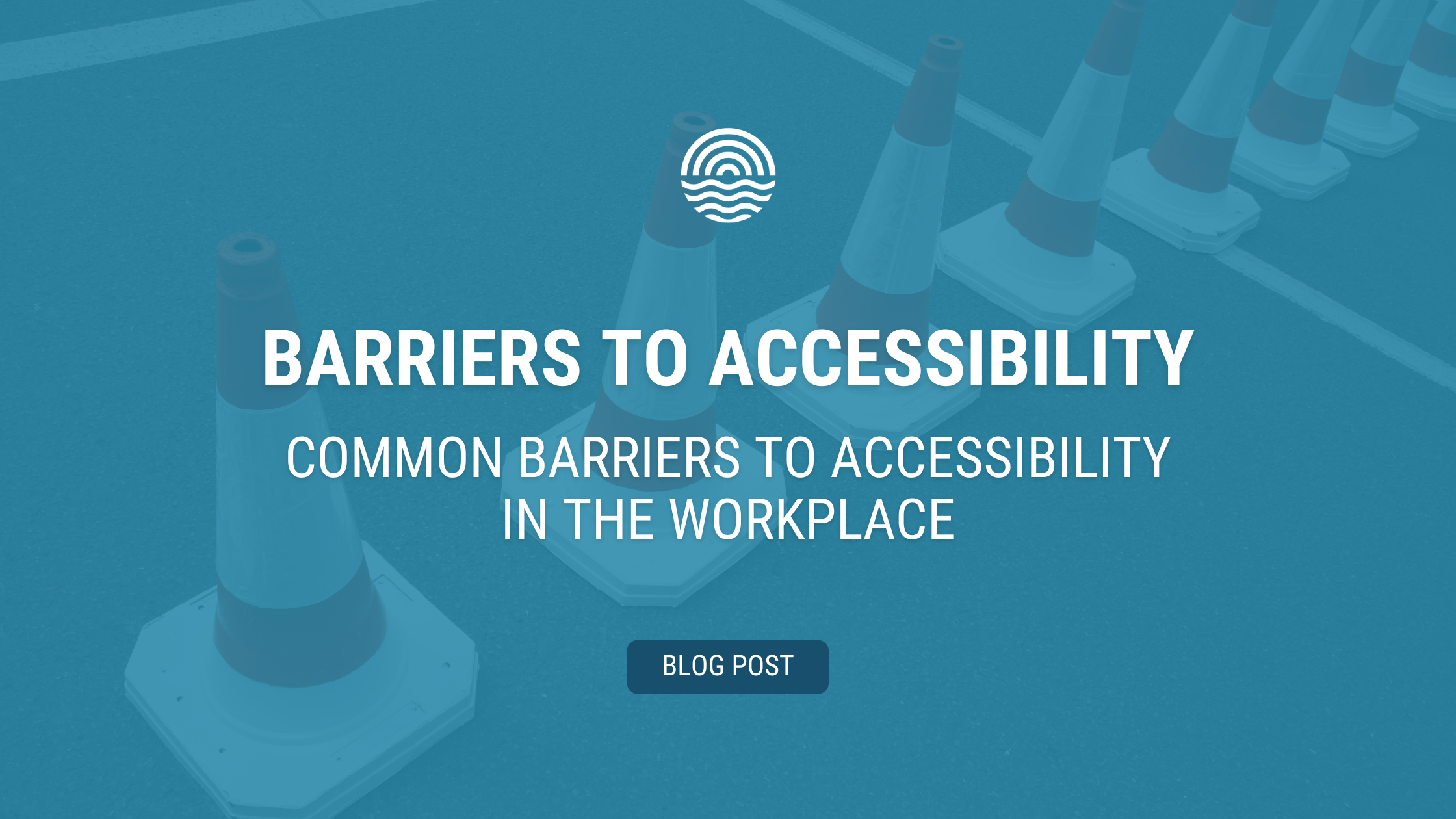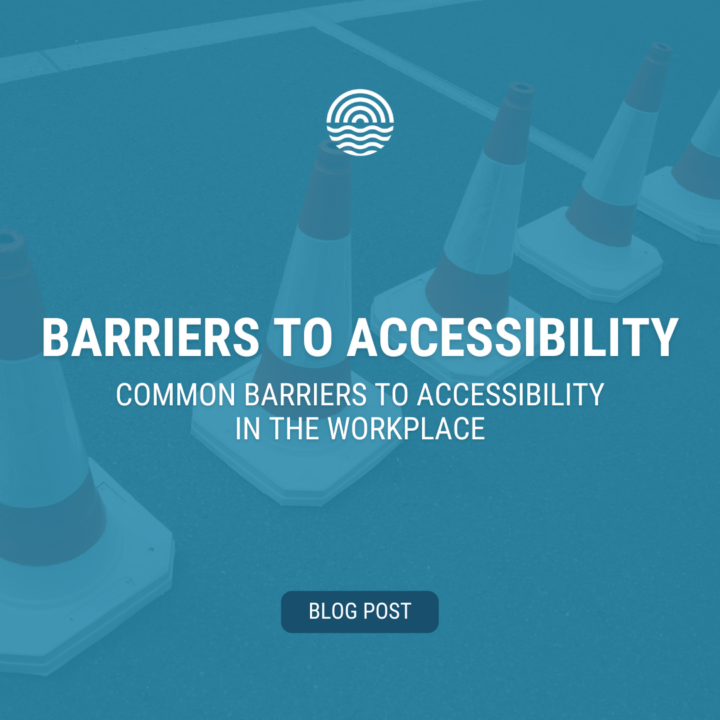
BLOG POST
Common Barriers to Accessibility in the Workplace
Creating a truly inclusive and accessible workplace is essential for attracting and retaining top talent, boosting employee morale, and driving business success. However, many organizations often face barriers to accessibility in their workplaces.
In this blog post, we will explore 4 common barriers to accessibility and inclusion in the workplace and offer practical solutions for employers to overcome them.
4 Common Barriers to Accessibility
1. Communication Barriers
What it is: Communication barriers are obstacles that hinder effective communication and understanding between individuals or groups.
Examples: Using jargon or technical terms, presenting information only in written format without audio descriptions or captions for videos, or not allowing enough time for employees who use speech-to-text technology to participate in meetings.
Potential solutions:
- Offer multiple communication formats (written, visual, oral),
- Provide language translation services where possible, and
- Train employees on inclusive communication best practices.
2. Technological Barriers
What it is: Technological barriers arise when technology or the way it’s used prevents individuals from accessing or fully participating in the workplace.
Examples: Websites or software that are not accessible to people with disabilities, lack of assistive technology, and relying solely on digital communication without considering employees with limited tech access.
Potential solutions:
- Ensure all digital platforms are accessible,
- Provide necessary assistive technology,
- Offer alternative communication methods, and
- Provide digital literacy training.
3. Attitudinal Barriers
What it is: Attitudinal barriers are preconceived notions, stereotypes, or biases that hinder inclusion and accessibility.
Examples: Stereotypes about people with disabilities, resistance to change, lack of empathy towards diverse perspectives, and discrimination based on race, gender, or other protected characteristics.
Potential solutions:
- Implement unconscious bias training,
- Promote DEI initiatives across your organization and track metrics to measure success,
- Foster open communication, and
- Create a workplace culture of respect and acceptance.
4. Physical Barriers
What it is: Physical accessibility refers to the ability of people with disabilities to access and use built environments, transportation, and information and communication.
Examples: Buildings without ramps or elevators, inaccessible restrooms, and lack of ergonomic workstations can limit the participation of individuals with disabilities.
Potential solutions:
- Conduct accessibility audits,
- Provide assistive technology where possible, and
- Ensure compliance with accessibility standards. For more information on accessibility requirements for federally regulated employers in Canada, click here!
Overcoming Barriers: A Path to Inclusion
Addressing these barriers requires a comprehensive and ongoing commitment from employers. Here are some general strategies to foster a more inclusive and accessible workplace:
- Leadership Buy-in: Actively involve senior leadership in creating an inclusive culture.
- Employee Engagement: Encourage employee feedback and involvement in DEI initiatives.
- Data-Driven Approach: Collect data on employee demographics, experiences, and satisfaction to identify areas for improvement.
- Continuous Learning: Provide ongoing training and development opportunities for all employees.
- Measurable Goals: Set clear, measurable goals for DEI and track progress regularly.
By taking proactive steps to address these challenges, we can create more welcoming and accessible waterfront workplaces for all employees.
Questions about advancing accessibility in your workplace? We’re here to help!


